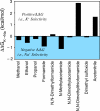Perspectives on: ion selectivity: design principles for K+ selectivity in membrane transport
- PMID: 21624944
- PMCID: PMC3105521
- DOI: 10.1085/jgp.201010579
Perspectives on: ion selectivity: design principles for K+ selectivity in membrane transport
Erratum in
- J Gen Physiol. 2011 Aug;138(2):279
Figures




References
Publication types
MeSH terms
Substances
LinkOut - more resources
Full Text Sources
Medical

